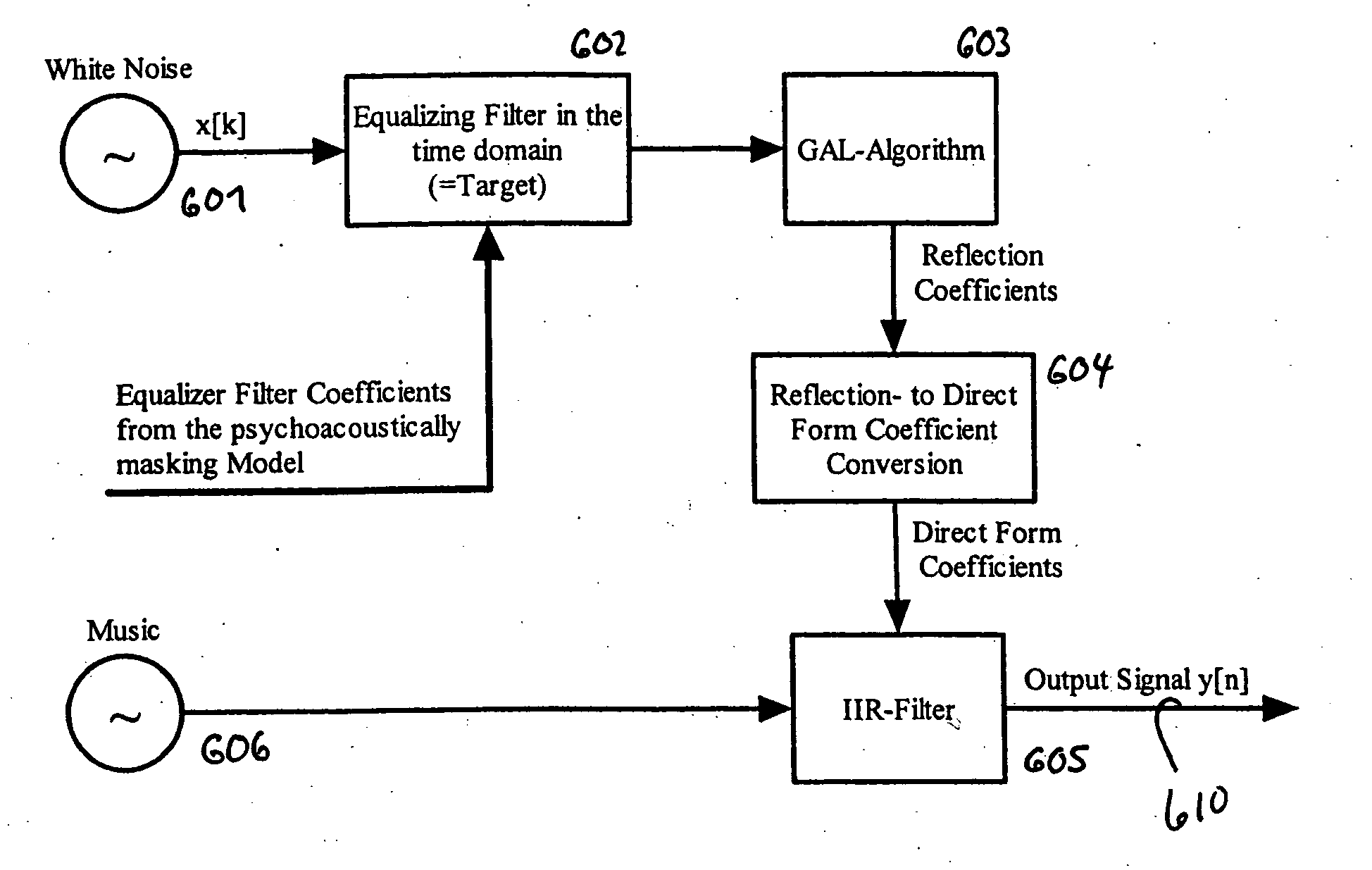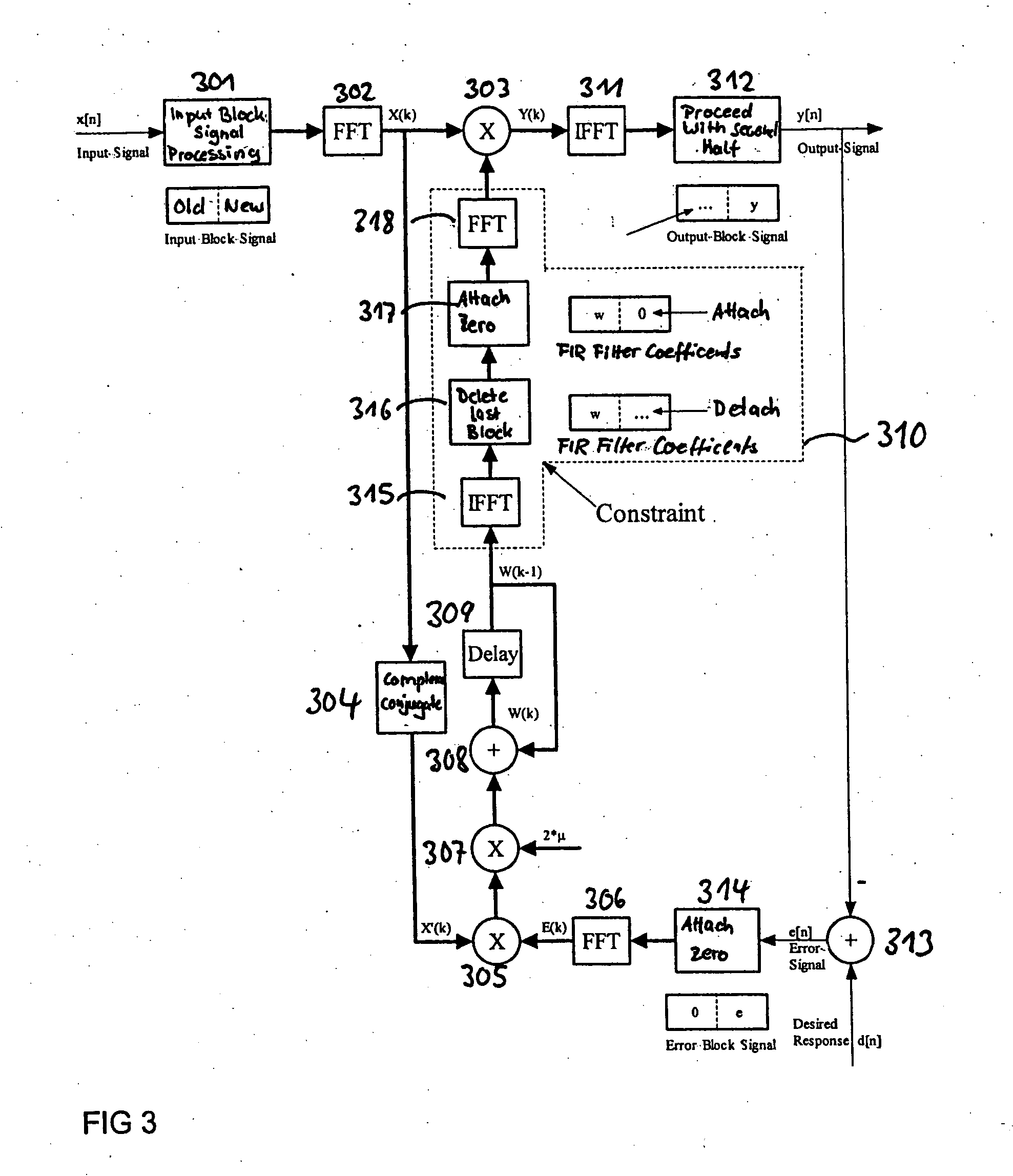Audio enhancement system and method
a technology of enhancement system and audio enhancement, applied in the field of audio enhancement system and method, can solve the problems of instability in the entire audio system, excessive volume of the audio system, and corrupted signal by external acoustic noise present in the vehicle, and achieve the effect of superior quality of the system and greater flexibility and options
- Summary
- Abstract
- Description
- Claims
- Application Information
AI Technical Summary
Benefits of technology
Problems solved by technology
Method used
Image
Examples
Embodiment Construction
[0026] Analysis shows that the main reason why adaptive filters fail in broadband applications in the time domain is to be found in the wide dynamic range of the input signals. If the broadband input signals in the time domain are transformed into the frequency domains in such a way that all frequency are processed, the music signal can be removed from the sensor signal in a broadband manner.
[0027]FIG. 1 illustrates a DEC system essentially operated in the frequency domain. In the system of FIG. 1, the voice signal component in the microphone signal is suppressed in the frequency domain. A signal source 101 supplies a desired signal, such as for example a music signal x[k] from CD player, radio, cassette player or the like. The signal x[k] is fed into a spectral dynamic equalization control (DEC) unit 102 operated in the frequency domain to an equalized signal y[k] on a line 107 to a loudspeaker 103. The loudspeaker 103 generates an acoustic signal, transferred to a microphone 104 ...
PUM
 Login to View More
Login to View More Abstract
Description
Claims
Application Information
 Login to View More
Login to View More - R&D
- Intellectual Property
- Life Sciences
- Materials
- Tech Scout
- Unparalleled Data Quality
- Higher Quality Content
- 60% Fewer Hallucinations
Browse by: Latest US Patents, China's latest patents, Technical Efficacy Thesaurus, Application Domain, Technology Topic, Popular Technical Reports.
© 2025 PatSnap. All rights reserved.Legal|Privacy policy|Modern Slavery Act Transparency Statement|Sitemap|About US| Contact US: help@patsnap.com



